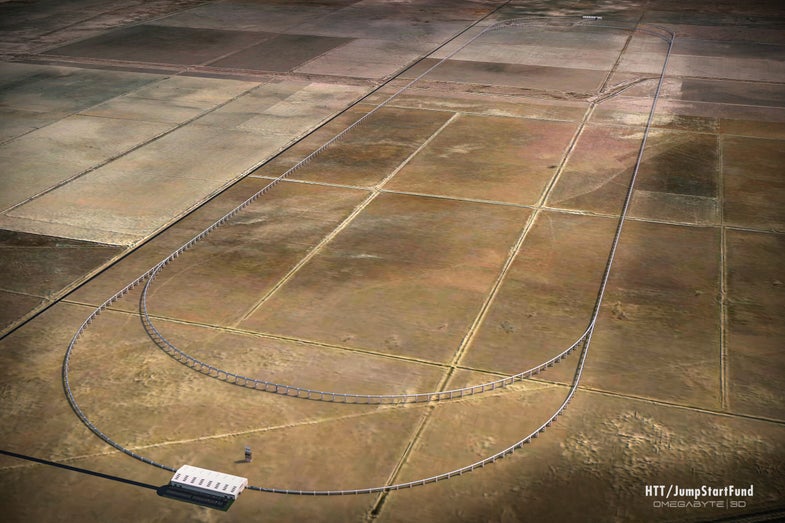California Hyperloop Test Track Will Start Construction Soon
Round and round we go

There’s good news and bad news about Hyperloop, the revolutionary transportation idea proposed by Elon Musk in 2013 that involves whisking people between cities in sealed pods through vacuum tubes at breathtaking speeds.
The good news: Dezeen reports that the first test track for a Hyperloop start-up will start construction in California in a matter of weeks. The five-mile test track will be the first of its kind, a place where inventors can test designs for pods that (in theory) can transport passengers at speeds of up to 760 miles per hour.
The bad news: It’s still going to cost a lot of money. Initial reports estimated the cost of the project at $100 million, but as the construction approaches, that number has gone up to $150 million. As with most technologies, costs will likely fall as the prototype becomes a production model.
The sad news: Even though the Hyperloop is being tested and developed in the United States, it’s unlikely that the first full Hyperloop network will be built here. Hyperloop Chief Operating Officer Bibop Gabriele Gresta told Dezeen, “There are other countries that are in a more advanced discussion phase and they have the political will, the lack of infrastructure, a high density of population, and less regulatory problems to make it happen.”
But before we worry too much about the regulatory environment around infrastructure, a working Hyperloop and pods need to be invented. The California test track is being built as part of a planned sustainable community, but it isn’t the only Hyperloop game in town.
The first stage of the Hyperloop Pod Competition (not affiliated with the California project) will happen in Texas in January. Updated competition rules were released this week. Once the teams progress past the first stage a select few will proceed to actually build prototype pods. The final stage will have two winners from two different classes of pods (those with wheels and those without) in addition to a class of mini-pods, for teams who can’t afford to build a full-scale model. The winners will be judged first by how fast they can go through the test track/tube without crashing, and then assessed with a rubric consisting of four categories; ‘Final Design and Construction,’ ‘Safety and Reliability,’ ‘Performance in Operations,’ and ‘Performance in Flight’.
We can’t wait.
- Update: This story has been updated to clarify that the test track in California is not related to the Hyperloop pod competition in Texas, and to reflect a correction in the price of the Quay Valley project.